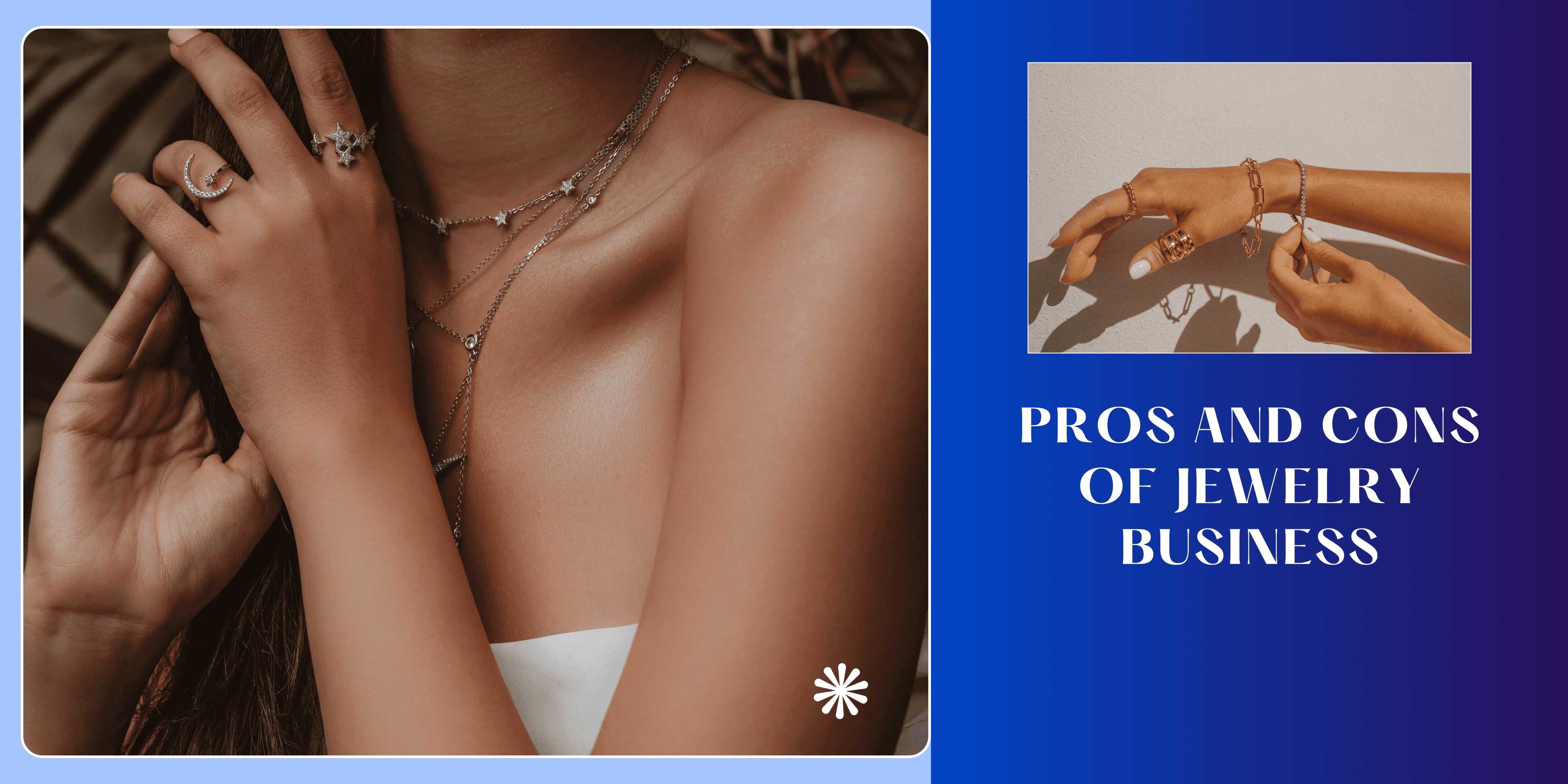
Learn reliable strategies for increasing jewelry store profit margins, like targeting customer segments, lowering expenses, and tracking key profitability metrics.
Whether you’re an aspiring jeweler or an experienced jewelry business, optimizing profit margins is essential to your long-term success. This comprehensive guide from CaratIQ explores strategies for increasing revenue and reducing costs, providing actionable insights to help your jewelry store improve profitability in a sustainable way.
How Do Jewelry Stores Make Money?
Jewelry stores generate most of their income through direct sales on high-end pieces like engagement rings, earrings, and necklaces (typically featuring diamonds or rare gemstones).
In addition, many jewelers now diversify their revenue streams by offering repairs, appraisals, custom designs, and even consignment sales. These ancillary services not only bring in significant earnings, but they also add value by increasing customer touchpoints and engagement.
To maximize revenue, jewelers have to invest in high-quality inventory and establish trust among their customer base. Trust is critical in the jewelry business, as customers have high expectations for product quality and authenticity.
The good news is, taking time to build this trust can turn first-time buyers into repeat customers who recommend your store to others.
Who Are Jewelry Store Customers?
Speaking of jewelry store customers, they are as diverse as the pieces you sell. From couples looking for an anniversary gift to individuals splurging on a one-of-a-kind item, jewelry customers have all sorts of reasons for making a purchase.
Understanding the specific needs, preferences, and spending habits of these customers can help you create personalized shopping experiences that positively affect your profit margins.
Targeting customer segments
One of the best ways to boost your profits is by targeting distinct customer segments.
Take bridal buyers, for example. These customers prioritize engagement rings and wedding bands—so marketing strategies for their segment might include advertising at bridal shows, partnering with wedding planners, or creating exclusive engagement packages.
Fashion-forward customers, on the other hand, are attracted to designs that feel current. These shoppers tend to be more impulsive, so you can target their buying habits by offering limited-edition collections or collaborating with trendsetters on social media.
Keep in mind that researching different customer segments helps you identify which group offers the highest revenue and margin potential. By analyzing customer data on preferences and purchasing behavior, you can better align your products and services with high-value customer needs.
Increasing customer spend
While customer spend differs depending on budget, occasion, and personal taste, most buyers are motivated by price. Higher-end jewelry attracts customers who are willing to invest more, while lower priced options appeal to those seeking quality on a budget.
With that in mind, jewelry stores can inspire larger purchases by:
● Promoting complementary upsells
● Cross-selling matching pieces
● Bundling corresponding items
For instance, bundling an engagement ring with a matching wedding band can increase spend while providing customers with added value.
Customer referral programs are another great way to boost sales. By incentivizing customers to refer friends and family, jewelry stores can attract new buyers and retain existing ones.
What Factors Impact Jewelry Store Profitability?
There are a number of factors that influence jewelry store profitability, from growth phases and expense management to the capacity for revenue generation.
Fortunately, by tracking key profitability metrics, jewelry store owners can keep close tabs on their financial health. This way, they can make adjustments to increase revenue and reduce costs.
Jewelry store growth phases
Jewelry stores usually go through a few different phases on the path to profitability.
In the startup phase, high initial costs for inventory and marketing can weigh on financial stability. During this phase, many stores may operate at a loss as they work to build brand awareness and find the right product mix.
Reaching the breakeven stage can take months or even years. However, by monitoring expenses and focusing on target customer segments, jewelry brands can shorten this period and move closer to profitability.
Once jewelers do become profitable, they can adopt strategies for maximizing revenue. This might mean increasing the average spend per customer (through upselling, etc)—or by investing in customer loyalty programs to promote repeat business.
Jewelry store expenses
Jewelers have to deal with a variety of fixed and variable expenses that impact their profits. Fixed costs remain consistent regardless of sales volume, whereas variable costs fluctuate with business activity. Examples include:
Managing costs effectively is vital to maintaining profitability—especially in such a high-margin, competitive industry. But while keeping overhead low is key, it’s also important not to sacrifice quality. For example, although high-end materials might be costly, they justify a higher selling price, leading to better margins.
Jewelry store revenue
Revenue is directly related to profitability, as it represents the total income from sales before expenses are deducted. Certain elements that influence a jeweler’s revenue include location, target audience, and types of jewelry sold.
A specialty jewelry store in an affluent area may focus on high-margin, low-volume sales by offering custom pieces to a luxury market. On the flipside, a mass-market retailer might operate on a high-volume, low-margin revenue model, selling affordable pieces to a broader audience.
Some stores may even take a mixed revenue approach, balancing high-end items with more accessible pieces to appeal to a wider range of consumers.
Jewelry store profitability metrics
Aside from revenue, there are several other profitability metrics that indicate your store's financial success. These include:
● Gross profit: Revenue minus the cost of goods sold (COGS). Gross profit shows the direct profitability on each piece sold, reflecting markup and pricing strategy.
● EBITDA (Earnings Before Interest, Taxes, Depreciation, and Amortization): Metric used for operational profitability, excluding costs like interest and taxes. EBITDA helps assess a store’s core efficiency and cash generation.
● Net income: Final profit after all operating expenses, taxes, and interest. Net income provides insight into the overall profitability of your business.
● Cash flow: Amount of cash coming in versus going out. A strong cash flow is necessary for maintaining inventory and covering expenses.
● Inventory turnover: How often stock is sold and replenished within a given time period. A higher turnover suggests efficient inventory management, balancing supply with customer demand.
On average, successful jewelers generate around $1.5 million in annual revenue, with a gross margin of approximately 50% and a net income margin of 30%. Obviously, a boutique store in a high-traffic area will see different results compared to an appointment-only custom business.
No matter what type of store you manage, tools like CaratIQ can streamline tracking for these profitability metrics and even integrate with accounting software like QuickBooks to simplify the financial monitoring process.
Best Practices to Improve Jewelry Store Profit Margins
Improving jewelry store profit margins requires a thoughtful approach to pricing, marketing, and inventory management. Here are some reliable ways to increase profits that don’t interfere with product quality.
Incorporate strategic pricing
Strategic pricing involves things like charging a premium for custom pieces and negotiating terms with suppliers. By pricing items based on demand and carefully managing operational costs, jewelers can increase profits without sacrificing customer satisfaction.
Implement customer loyalty programs
Retaining existing customers is often more profitable than acquiring new ones. Loyalty programs drive repeat purchases and can be as simple as offering discounts or exclusive deals.
Optimize inventory turnover
Slow-moving stock ties up capital, so regularly evaluating and updating inventory is crucial. CaratIQ can help monitor inventory turnover rates, ensuring your stock aligns with customer demand trends so you’re not stuck with a bunch of pieces you can’t sell.
Leverage digital marketing
Reaching potential customers through targeted email campaigns, social media ads, and search engine marketing can drive traffic to your store. CaratIQ’s all-in-one marketing module helps you create digital campaigns and track the performance of your marketing efforts in real-time.
Capitalize on seasonal trends
Adjusting your inventory and marketing for high-demand periods like the holidays and engagement season can help maximize profits. During slower months, you can promote repairs or launch end-of-season sales to keep cash flow steady.
These strategies create a strong foundation for a profitable jewelry business that withstands market fluctuations and continues to scale.
Plus, with CaratIQ, you have a complete jewelry software solution to help grow your business—with features for increasing efficiency, attracting customers, and easily managing your jewelry store operations.
Contact CaratIQ to schedule your free demo today!
Read Also:
How to Organize and Track Your Jewelry Inventory?
What are the Legal Requirements for Selling Jewelry?
Tools Needed to Make Jewelry: A Comprehensive Guide for Bench Jewelers

You may also like
View all

